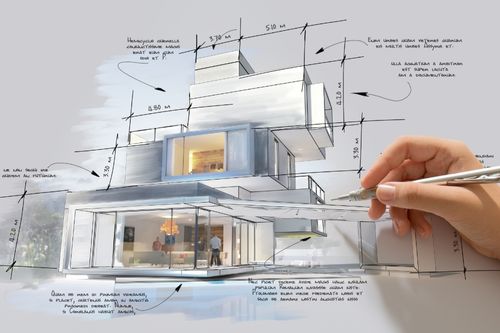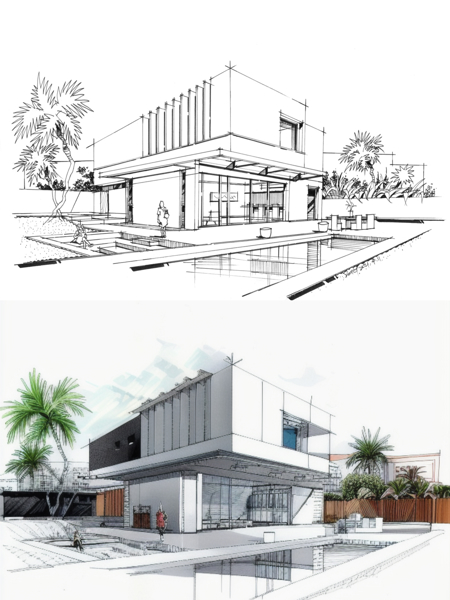The Creative Refine Behind Effective Jobs from CDA Architects
The Creative Refine Behind Effective Jobs from CDA Architects
Blog Article
The Impact of Technical Improvements on the Design Practices of Contemporary Architects
The quick development of technological devices has dramatically reshaped the design landscape for modern designers, fostering extraordinary levels of advancement and sustainability. The integration of Structure Information Modeling (BIM), parametric style, and expert system has not just streamlined cooperation among varied groups but additionally redefined project execution. As engineers embrace these improvements, they are challenged with complex difficulties that might influence their imaginative processes. Checking out these characteristics discloses a nuanced interplay between innovation and typical design approaches, triggering a more detailed examination of what the future holds for architectural methods.
Development of Architectural Equipment
Just how have building devices changed the style and building processes over the centuries? The evolution of building tools has actually dramatically affected the efficiency, precision, and imagination of design and building and construction.
With the introduction of the Renaissance, the introduction of the compass and the protractor noted a critical change. These tools enabled designers to achieve better accuracy in their layouts, helping with the emergence of even more intricate and proportional buildings (cda architects). The Industrial Change even more changed architectural exercise with the introduction of mechanical tools and materials, enabling larger and extra ambitious jobs
In the 20th century, the development of computer-aided style (CAD) software program transformed the landscape once more, providing designers with extraordinary capabilities in modeling and visualization. Today, progressed tools such as Structure Info Modeling (BIM) and parametric layout software continue to press the boundaries of architectural advancement, enabling a much more incorporated strategy to design and construction procedures.

Boosted Cooperation in Design
As modern technology remains to evolve, boosted partnership in design has actually ended up being a cornerstone of modern-day architectural technique. The combination of electronic tools such as Building Info Modeling (BIM), cloud-based platforms, and progressed visualization software has actually transformed the means architects, designers, and stakeholders communicate throughout the layout process. These devices help with real-time interaction, allowing groups to share ideas, adjustments, and feedback instantaneously, regardless of geographical place.
Moreover, online fact (VR) and increased reality (AR) have additional enriched joint efforts by making it possible for immersive experiences that allow clients and staff member to picture tasks in a more appealing fashion. This level of interaction not just boosts understanding but likewise cultivates a sense of ownership amongst stakeholders, leading to more educated decision-making.
In addition, interdisciplinary collaboration has actually been structured with these technical developments, allowing engineers to work much more carefully with various other specialists, such as urban planners and environmental professionals. The outcome is a more cohesive method to create that takes into consideration numerous perspectives and competence. Eventually, boosted cooperation in design is not merely a trend; it is vital for producing ingenious, practical, and cosmetically pleasing style in a significantly intricate globe.
Sustainability Via Modern Technology
Sustainability in design has actually progressively ended up being intertwined with technological development, driving the industry toward eco liable techniques - cda architects. Contemporary designers are leveraging sophisticated innovations to reduce environmental influence while boosting the efficiency of buildings. One popular example is making use of Structure Info Modeling (BIM), which enables for precise preparation and source allotment, decreasing waste during building and construction and advertising power efficiency throughout a structure's lifecycle
Additionally, wise materials and energy-efficient systems are being incorporated into designs to maximize resource use. Technologies such as photovoltaic or pv cells and eco-friendly roof harness renewable resource sources, adding to decreased carbon impacts. Furthermore, the application of expert system in style procedures allows architects to replicate and evaluate power usage, leading decisions towards more lasting results.
The assimilation of sustainable modern technologies not only straightens with worldwide ecological goals yet also satisfies an increasing need from customers for environment-friendly solutions. As designers embrace these advancements, the emphasis shifts in the direction of developing areas that are not just aesthetically pleasing however additionally functionally sustainable, consequently redefining the criteria of modern design. In this means, technology functions as a stimulant for sustainability, enabling designers to make buildings that respect and improve the native environment.
Challenges in Application
While technical advancements in architecture hold excellent assurance for enhancing sustainability, their application commonly runs into significant challenges. One main challenge is the high understanding contour related to brand-new innovations. Architects and construction experts might require comprehensive training to successfully make use of innovative software program and devices, which can postpone task timelines and raise prices.
In addition, the assimilation of arising modern technologies, such as Structure Details Modeling (BIM) and lasting materials, commonly requires partnership across multidisciplinary teams. This collaboration can be hindered by distinctions in proficiency, workflows, and interaction designs, causing prospective disputes and inefficiencies.
Financial constraints further make complex the fostering of ingenious technologies. Many building companies, particularly smaller ones, might lack the resources to spend in innovative tools, restricting their capacity to contend with larger companies that can pay for such investments.
In addition, regulative frameworks and structure codes may not keep rate with technological advancements, developing uncertainty and potential conformity issues. This obstacle can dissuade architects from completely welcoming new technologies, as visit site the threat of non-compliance may surpass the benefits. Addressing these application challenges is vital for the successful combination of technical developments in modern building practices.
Future Fads in Architecture
The difficulties connected with the implementation of new modern technologies in architecture have motivated a reevaluation of future trends within the market. As designers browse issues such as sustainability, urbanization, and social equity, they are progressively taking on innovative technologies to enhance layout efficiency and environmental efficiency.
One noticeable trend is the integration of expert system (AI) in the layout procedure. AI tools can evaluate huge datasets to educate layout choices, enhancing both creativity and performance. Building Information Modeling (BIM) continues to develop, allowing real-time partnership among stakeholders and helping with streamlined project management.
Sustainable design practices browse around this web-site are also gaining energy, with engineers concentrating on flexible reuse and regenerative style principles that reduce resource consumption and waste. The unification of smart products and renewable resource resources will additionally boost the resilience of structures despite environment modification.
Furthermore, the increase of parametric design enables even more individualized and context-sensitive architectural solutions. By harnessing these innovations, designers are poised to develop constructed atmospheres that not only resolve the instant needs of culture however also prepare for future website link difficulties, thereby redefining the duty of design in an ever-changing world.
Verdict

Report this page